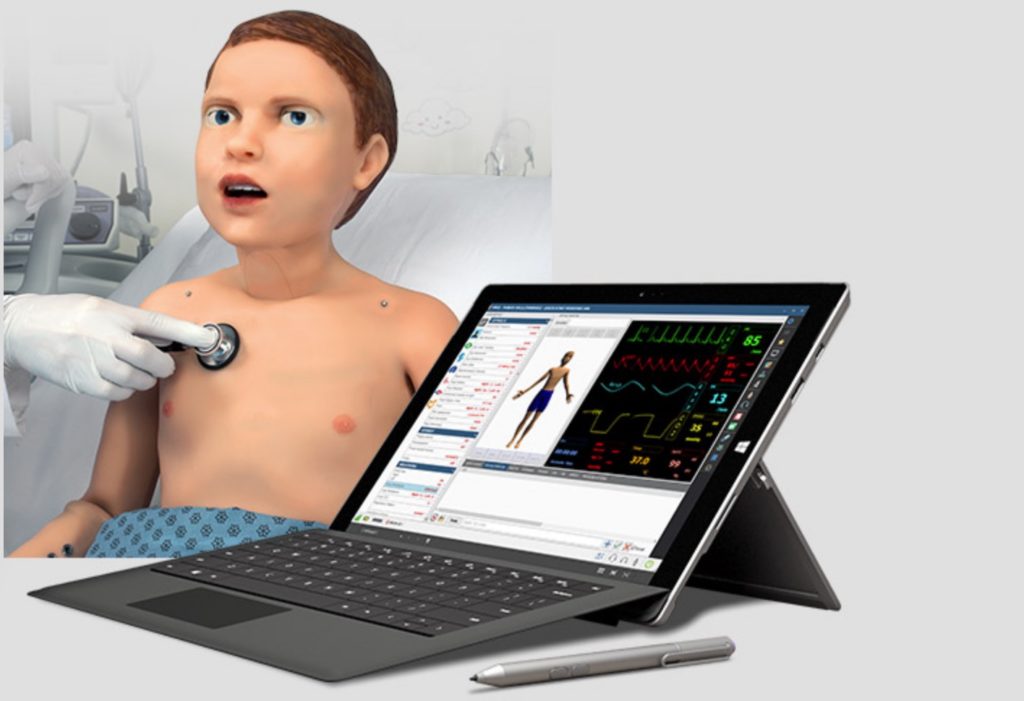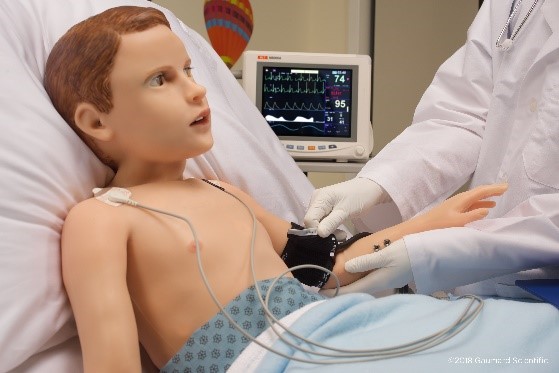Pediatric Hal is a Patient Simulator That Can Bleed, Cry and Sweat
To help it’s nursing students get more real-world experience with pediatric patients, Bunker Hill Community College in Boston is turning to robots. They’ve been using Pediatric Hal to simulate a 5-year-old male patient. The robot comes from Miami based Gaumard Scientific who are known for their wide variety of medical simulators. Bunker Hill turned to robots partially due to the limited availability of clinical placement slots with patients in the area.
Hal is as close to a real as you can get. He’ll display symptoms, vital signs and respond to treatments and medications. The robot can also move its eyes, give a variety of facial expressions, and even track a person’s finger during a test. If Hal isn’t responding well to treatment he’ll appear lethargic, worried, or in pain. The robot will cry real tears, pupils will dilate, and even start to sweat.
Students Can Take Blood from Pediatric Hal
When examining Pediatric Hal, students will hear heart, lung and bowel sounds and feel a pulse. Nurses can even take blood or administer an IV. The robot features surgical sites for needle decompression and chest tube insertion exercises using real instruments.
One of Hal’s main jobs at Bunker Hill is helping to train nurses to properly respond to seizures. Hal can simulate a seizure with all the typical body movements and facial expressions. And once students begin to treat him, the robot will respond accordingly to acetaminophen or other drugs.

Robot Patient Controlled with Tablet
Hal doesn’t need to be tethered to anything nor connected to a giant network. He is battery operated and can be used in all types of settings. Instructors can control the robot wirelessly with a tablet. They can set up all types of scenarios and processes.
Hal is not really a social robot. He can speak but it’s limited to pre-recorded answers to questions or an instructor speaking through Hal with a microphone. Pediatric Hal is typically deployed in a six-hour-long class that enables about eight nursing students to interact with the robot.
Check out our articles on a London bar using facial recognition and Gita the shopping robot.

